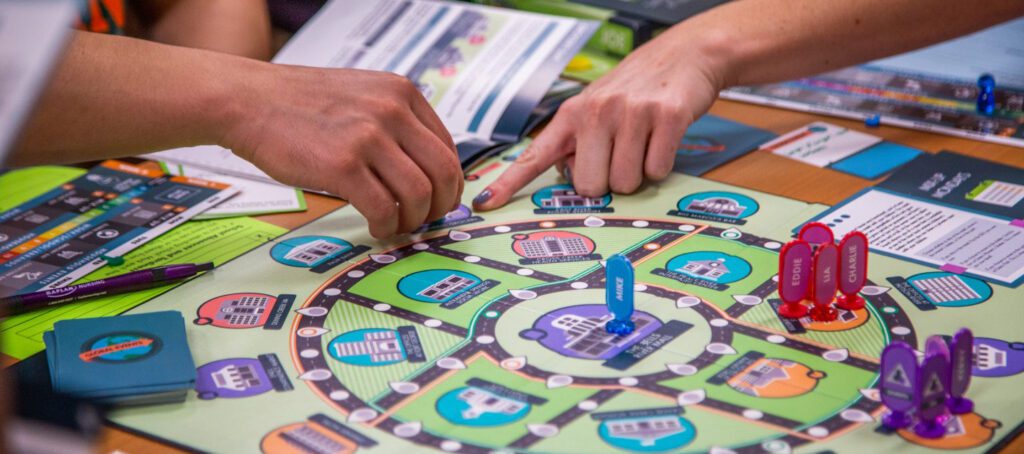Simulation games, which replicate real-life situations or systems, are being used by educators to teach children about science and technology, with benefits including enhancing critical thinking and problem-solving skills and sparking an interest in science and technology. Simulation games create a simulated version of real-world situations, facilitating exploration, experimentation with virtual systems, devices or processes that mimic reality in environments without risks, and can aid in familiarising children with a subject matter. Examples of simulation games for kids in science and technology include Minecraft, Kerbal Space Program, and SimCity.
The Role of Simulation Games in Teaching Kids about Science and Technology
The world is rapidly advancing in science and technology, and it is essential that our children capture the knowledge and skills necessary to keep up with the pace. As parents, educators, and mentors, we have a responsibility to help our children learn and achieve much in these significant areas. The use of simulation games to teach kids about science and technology presents a promising way of achieving this goal.
What are Simulation Games?
Simulation games are video and computer games that replicate real-life situations or systems. These games are designed to provide players with an experience of operating, managing or experimenting with devices, resources, or processes. Simulation games mimic the functions of a particular system or process and allow players to interact in such environments without experiencing any of the actual risks or constraints.
The Role of Simulation Games in Teaching Kids about Science and Technology
The use of simulation games as a teaching tool has gained popularity among educators as it helps to enhance the learning outcomes of students. Playing simulation games equips children with valuable knowledge and skills while simultaneously fostering their interest in science and technology. Here are some of the ways simulation games can enhance children’s learning in science and technology:
Provides a Realistic Environment for Learning
Simulation games provide children with a simulated version of real-world situations, creating an ideal learning environment. In these games, children can explore and interact with virtual systems, devices or processes that mimic reality. This feature allows children to familiarize themselves with these systems as they relate to science and technology. Children can also experiment with various operations and techniques within the game without facing any of the risks or constraints that may exist in reality.
Encourages Critical Thinking and Problem-Solving Skills Development
Simulation games offer an opportunity for children to develop critical thinking and problem-solving skills. In these games, children are often faced with challenging situations that they must solve to progress further in the game. They must use their reasoning skills to make informed decisions that will lead to desired outcomes. As they progress through the game, they develop critical thinking skills, which are essential in science and technology.
Enhances Children’s Creativity and Innovation Skills
Much of science and technology is about creating novel solutions to problems and innovating new devices, systems or processes. Simulation games provide children with a platform to experiment with various ideas, techniques, and methods of problem-solving without fear of failure. In these games, children can develop new approaches to solving old problems, leading to innovative solutions.
Instills a Passion for Science and Technology
Simulation games can spark children’s interest and passion for science and technology. These games create exciting, immersive experiences that allow children to see the practical applications of science and technology in their daily lives. Children become motivated to explore further, gaining knowledge and developing skills that they can apply in real-life scenarios.
Examples of Simulation Games for Kids in Science and Technology
Here are some simulation games that can aid children in learning about science and technology:
Minecraft Education Edition
Minecraft is a well-known game that involves creating structures, objects and systems in a virtual world. The Education Edition of Minecraft is designed specifically for classroom use, allowing children to explore scientific concepts and principles through building and creation.
Kerbal Space Program
Kerbal Space Program is a game that allows children to create and fly rockets, spacecraft and other planetary vehicles. The game incorporates scientific concepts such as physics and engineering, allowing children to experiment with concepts in a fun and engaging manner.
SimCity
SimCity is a city-building simulation game that allows players to design, build and manage their own cities. The game incorporates various scientific concepts such as energy production, pollution control, and transportation planning, providing an educational experience for children.
Conclusion
The use of simulation games presents an excellent way to teach kids about science and technology. These games provide an immersive, engaging learning experience that enhances children’s critical thinking, problem-solving, creativity, and innovation skills. As a result, simulation games can instill in children a passion for science and technology while preparing them with the necessary knowledge and skills needed to thrive in a rapidly advancing technological world.
